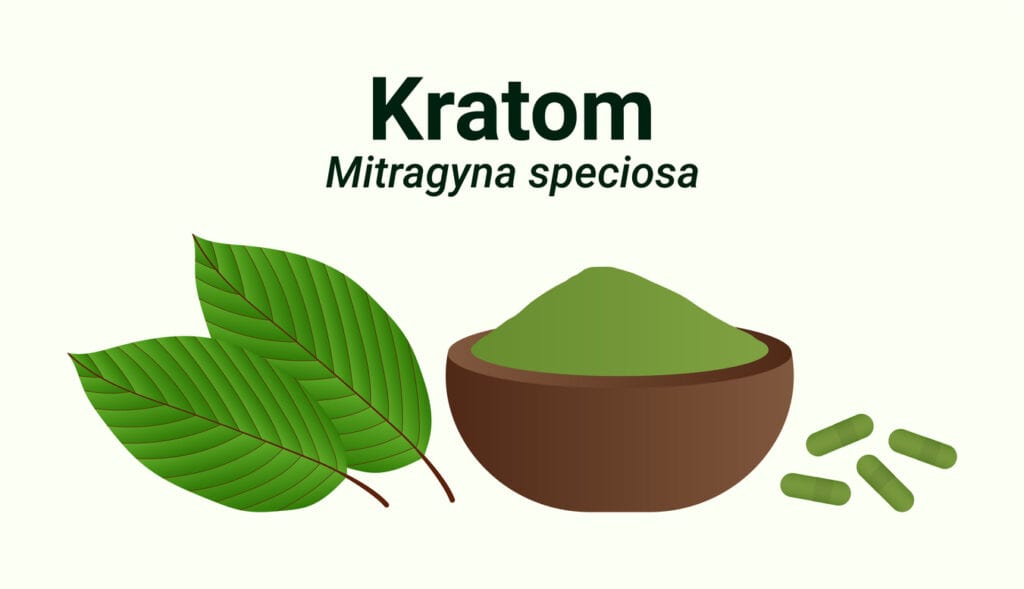TABLE OF CONTENTS
Greetings, fellow botanical enthusiasts! Today we're venturing into a unique crossroads between two remarkable plant species: Kratom and Cannabis.
These two entities, though distinct in origin and nature, share some fascinating similarities and differences, especially regarding their social acceptance, legal landscapes, and sales aspects.
This article will explore these intersecting worlds without delving into any health claims or effects.
The Social Landscape of Kratom
Firstly, let's explore the social landscape of these two intriguing botanicals. Both Kratom and Cannabis have been part of traditional and folk medicine practices across various cultures for centuries.
Originating from Southeast Asia, Kratom, or Mitragyna Speciosa, has been an integral part of local customs, while Cannabis has seen widespread use across different cultures globally.
The contemporary social acceptance of these two plant species, however, has differed vastly. Cannabis, especially in the past decade, has witnessed increasing acceptance, with numerous states in the U.S. legalizing its use to varying degrees.
Kratom, meanwhile, is still relatively unknown to the broader public and often misunderstood due to its less mainstream status.
Navigating the Legal Maze of Kratom and Cannabis
The legal landscapes of Kratom and Cannabis are evolving, complex, and often subject to debate. Cannabis has seen an incredible shift in legal status over the past few years. Many states have enacted laws legalizing Cannabis either for medical use, recreational use of cannabis, or both.
On the other hand, Kratom's legal status varies by country and, in the U.S., by state. Some places have fully embraced Kratom, while others have enacted restrictions or outright bans.
Much like with Cannabis, the legal status of Kratom is subject to change as research progresses and understanding deepens.
A Peek into the Market Dynamics of Kratom and Cannabis
From a sales perspective, both Kratom and Cannabis have seen significant growth in the past few years.
The cannabis industry, with the gradual legalization across various states, has witnessed a tremendous upsurge. It has opened up new markets for edibles, tinctures, topicals, and other cannabis-infused products.
The Kratom market, while smaller and less established, has also seen substantial growth. This surge is primarily driven by an increasing interest in botanical wellness and natural products.

The Kratom industry offers a range of products, from Kratom powders and extracts to kratom capsules and tea bags, catering to the varied preferences of consumers.
The Importance of Quality Assurance of Kratom & Cannabis
Whether it's Kratom or Cannabis, ensuring the quality and safety of products is paramount. Both industries grapple with this issue.
For Cannabis, regulation has led to increased testing and quality assurance practices.
As the industry grows, so too does the emphasis on regular lab testing, clear labeling, and transparent practices.
The Intersection: Advocacy and Education
Despite their differences, both Kratom and Cannabis share a crucial common ground: the need for advocacy and education. Misconceptions and misinformation are rampant for both botanicals, often fueled by their complex legal statuses and the slowly evolving research landscape.
Communities for both Kratom and cannabis have formed to promote responsible use, debunk myths, and lobby for fair legislation. These communities strive to foster a better understanding of these plants, their histories, and their places in modern society.
As the journey for both Kratom and cannabis continues, the road ahead is one of discovery, understanding, and continued growth. By exploring their intersecting worlds, we can gain a broader perspective on these fascinating plants and their roles in our ever-evolving society.
Cannabis versus Kratom: A Comprehensive Comparison
Two well-known plants, Kratom and Cannabis, have recently gained popularity in the area of alternative treatments. Both have been the focus of discussions on their possible medicinal properties as well as the issue of their legal standing. This article examines these two botanical marvels in depth, contrasting and comparing them on numerous levels.
Kratom Vs. Weed

Kratom
Kratom is a tropical evergreen tree that is indigenous to Southeast Asia, particularly in nations like Thailand, Malaysia, and Indonesia. Its scientific name is Mitragyna speciosa. The leaves of the plant have long been employed for therapeutic purposes.
Cannabis
Cannabis, sometimes known as marijuana, is a flowering plant that has been used for thousands of years for both therapeutic and recreational purposes. Although it originated in Central Asia, it has subsequently expanded throughout.
How Do Kratom and Cannabis Get Made?
Kratom
The mature leaves of the tree are plucked to obtain kratom. You can eat these leaves fresh or dry. They are frequently processed into a powder for commercial distribution or made into capsules, pills, or liquid extracts.
Cannabis
To maximize the concentration of chemicals like THC and CBD, cannabis plants are grown in carefully regulated settings. The blossoming buds are picked, dried, and cured. After that, they can be smoked, vaped, or turned into a number of goods like tinctures, oils, and edibles.
Cannabis and Kratom in Various Forms
Leaf powdered kratom
Tablets or capsules
Liquid tinctures or extracts
Cannabis:
Buds of dried flowers
Gummies, brownies, and other edibles
Tinctures and oils
Creams and balms for the skin
Products for vaping Potential Benefits
Kratom:
Pain reduction
Vigor boost
Mood improvement
Relief from opiate withdrawal
Marijuana pain alleviation
Lowering of tension and depression
Certain epilepsy symptoms are reduced
*Sleeping better Effects of both Kratom and Cannabis
The effects of kratom vary depending on strain and dosage. Kratom can serve as a stimulant at low doses, boosting energy and alertness. It can have sedative effects at larger doses that are comparable to opioids.
The individual strain and its THC to CBD ratio will determine the effects of cannabis. The effects of THC-rich strains are frequently euphoric and intoxicating, whereas those of CBD-rich strains are more soothing without giving users a “high.”
Similarities of Kratom Vs. Cannabis
Both are organic herbs with a long history of use.
Both have received accolades for their potential as therapeutics, particularly for the treatment of pain.
Both have experienced widespread regulatory difficulties and scrutiny.
Costs of Kratom vs Cannabis

Kratom and cannabis are both priced differently based on the region, legality, quality, and form. Kratom is typically more reasonably priced; a regular packet costs between $10 and $30. The price of cannabis can vary substantially; some premium strains can go up to $15 per gram.
Statutes and Rules of Kratom and Cannabis
Kratom
The legality of kratom differs between countries. While it is permitted in the majority of the U.S., certain states and localities have passed laws against it. Internationally, nations like Thailand and Australia have outlawed its use.
Cannabis
Cannabis laws are intricate and constantly alter. Although several states in the US have legalized the use of cannabis for recreational and medical purposes, it is still prohibited on a federal level. Around the world, nations have a variety of laws ranging from outright bans to legalization or permitted medical usage.
Can you mix Kratom and Cannabis?
Kratom and Cannabis can be mixed but it should be noted that both need to be from reliable sources and verified for their cleanliness prior to mixing. It's best to avoid mixing Kratom and Cannabis just to be on the safe side.
Kratom vs. Cannabis: A Comprehensive Comparison
Kratom and cannabis have both gained significant attention in recent years for their potential therapeutic benefits.
While they come from entirely different parts of the world and have distinct profiles, they're often discussed in similar circles due to their psychoactive properties. In this article, we'll delve into the similarities and differences between these two natural substances.
Origins and Basics
Kratom: Native to Southeast Asia, kratom is derived from the leaves of the Mitragyna speciosa tree. It's been traditionally used as a stimulant in low doses and a sedative in higher doses, often consumed as a tea or chewed raw.
Cannabis: Originating from Central Asia, cannabis has been used for thousands of years both recreationally and medicinally. It's typically smoked, vaporized, or ingested in edible form.
Active Compounds
Kratom: The primary active compounds in kratom are alkaloids, with mitragynine and 7-hydroxymitragynine being the most prominent. These compounds interact with opioid receptors in the brain, which results in its effects.
Cannabis: Cannabis contains cannabinoids, with THC (tetrahydrocannabinol) and CBD (cannabidiol) being the most studied. These compounds interact with the endocannabinoid system in the body.
Effects
Kratom:
- Low doses: Energizing and stimulating.
- Higher doses: Sedative, producing an opioid-like effect.
Cannabis:
- THC-dominant strains: Euphoria, heightened senses, and altered perception.
- CBD-dominant strains: Relaxation without intense psychoactivity.
Medical Uses
Kratom: It's been cited for pain relief, mood enhancement, energy boosts, and even opioid withdrawal management.
Cannabis: Prescribed for various conditions, including chronic pain, nausea, glaucoma, and certain seizure disorders.
Legal Status
Kratom: Its legal status varies globally. In the U.S., it's illegal in some states but not federally regulated.
Cannabis: Laws vary worldwide. In the U.S., it's illegal at the federal level but legal for medicinal and/or recreational use in several states.
Risks and Side Effects
Kratom: Potential risks include dependence, withdrawal symptoms, liver damage, respiratory depression, and even death when mixed with other drugs.
Cannabis: Short-term effects might include dry mouth, bloodshot eyes, memory issues, and paranoia. Long-term use can impact cognitive function and may have implications on mental health.
Weed vs. Kratom Summary
Cannabis and kratom are two different drugs with different applications, effects, and possible side effects.
Kratom:
What It Is: Kratom is made from the leaves of the Southeast Asian native Mitragyna speciosa tree. Although it's usually taken as a tea or chewed, it can also be found in extracts, powders, and capsule form.
Effects: Kratom functions as a stimulant at low doses, boosting energy and alertness. Similar to opioids, higher doses may produce sedative and narcotic effects.
Uses: It is a stimulant and an analgesic, used to relieve pain and treat symptoms of opioid withdrawal. Unfortunately, there hasn't been much scientific research done on kratom, thus most of these uses are based on anecdotal evidence.
Risks: Kratom has the potential to cause withdrawal symptoms akin to those of opiates and can be addictive. Severe adverse effects include liver damage, suppression of respiration, and, in rare instances, death are all possible outcomes. Certain prescription medications have negative interactions with kratom, and it can be hazardous to a developing fetus.
Legality: Kratom is prohibited in some states and municipal governments but is lawful on a federal level in the United States.
What is Cannabis (Marijuana)? Among the numerous substances found in cannabis are THC (tetrahydrocannabinol) and CBD (cannabidiol). CBD is not psychotropic; THC is.
Effects: THC has an impact on mood, memory, and other processes through the endocannabinoid system. It can bring about relaxation, exhilaration, and changes in perception of the senses. The potential therapeutic benefits of CBD without the side effects of intoxication are well documented.
Applications: Cannabis is used to treat a number of neurological conditions as well as pain, anxiety, nausea in cancer patients, and hunger stimulation. It's crucial to remember that the majority of cannabis products do not have FDA approval.
Dangers: THC's psychoactive qualities, which can lead to tiredness, agitation, red eyes, and other mild to moderate side effects, are the primary cause of cannabis's hazards. Overdosing on cannabis is not known to be fatal.
Legality: The laws governing cannabis differ. While it is prohibited federally, numerous states in the United States have authorized it for either medical or recreational use.
“
There are over 300,000 jobs in the cannabis industry. CTU trained me for one of them!

Makes $24.50 @ THC +
Because cannabis is a federal substance, it is prohibited to transport marijuana across state lines.
It is important to take into account the differences in effects, potential advantages, hazards, and legal status between kratom and cannabis while comparing the two.
Both drugs have unique dangers and adverse effects, but they can also be used to treat pain and certain medical disorders. Although kratom is thought to be more addictive and less risky than cannabis, both drugs should be used with caution, but kratom should be used more so because of its greater risk profile and potential for serious side effects.
Conclusion of Kratom vs Cannabis

Even though they are frequently compared while talking about natural medicines, cannabis and kratom each offer unique sensations and advantages.
Both plants' legal landscapes are still changing, reflecting society's evolving views on natural treatments and their role in contemporary healthcare.
Both kratom and cannabis offer potential benefits, but they come with their set of risks. As with any substance, moderation and informed decision-making are crucial. Always consult a healthcare professional before beginning any new treatments or therapies.
What is the FDA warning on Kratom?
The FDA issued a warning about kratom, or Mitragyna speciosa, the scientific name for the plant, in April 2022. The FDA claimed that the substance “affects the same opioid brain receptors as morphine” and that it “appears to have properties that expose users to the risks of addiction, abuse, and dependence.”
Is Kratom safe or unsafe?
Kratom has no approved applications by the FDA. Numerous items marketed as kratom have been found to contain dangerous impurities, including germs and heavy metals. There have been a variety of reported effects for kratom.
How does Kratom affect anxiety?
In addition to physical symptoms resembling opiate withdrawal, long-term use of kratom may result in psychological and physical effects that are very similar to its withdrawal syndrome, such as anxiety, irritability, mood, eating, and sleep difficulties.
What are the advantages of Kratom?
Researchers have discovered that people claim to use kratom for a variety of purposes, including pain relief, treating the symptoms of mental health disorders including anxiety and depression, stopping or reducing opioid or other substance usage, and managing opioid withdrawal symptoms and cravings.
Kratom vs. Kava
While sedative effects can be obtained with both kava and kratom, they are not equivalent. Actually an opiate, kratom is a stimulant with sedative qualities. For thousands of years, Polynesian tribes have utilized the calming herb kava as a ceremonial drink to facilitate social relations. So Kava acts as more of a depressant when compared to Kratom.

Fred Hernandez
Fred Hernandez is a highly accomplished and versatile writer, boasting an extensive background in the cannabis industry. With an in-depth understanding of various sectors including cultivators, processors, retailers, and brands, Fred's expertise spans across the entire cannabis landscape. As a prominent contributor to CTU, he consistently delivers insightful articles exploring the latest developments, news, and regulations shaping the cannabis industry. Whether it's delving into the intricacies of cannabis products, cannabis strain reviews, or providing comprehensive analyses of cannabis laws, or sharing expert insights on cannabis cultivation techniques, Fred's wealth of knowledge positions him as an invaluable writer and educator for all cannabis-related subjects.












 Jeff was involved in an accident where he endured a traumatic brain injury. He had a week-long stay in ICU where brain surgeons
Jeff was involved in an accident where he endured a traumatic brain injury. He had a week-long stay in ICU where brain surgeons  100% risk free money back guarantee within 48 hours after purchase if student has not completed any of the courses or exams.
100% risk free money back guarantee within 48 hours after purchase if student has not completed any of the courses or exams.